How to Choose the Perfect Meat Cutter Machine for Your Business
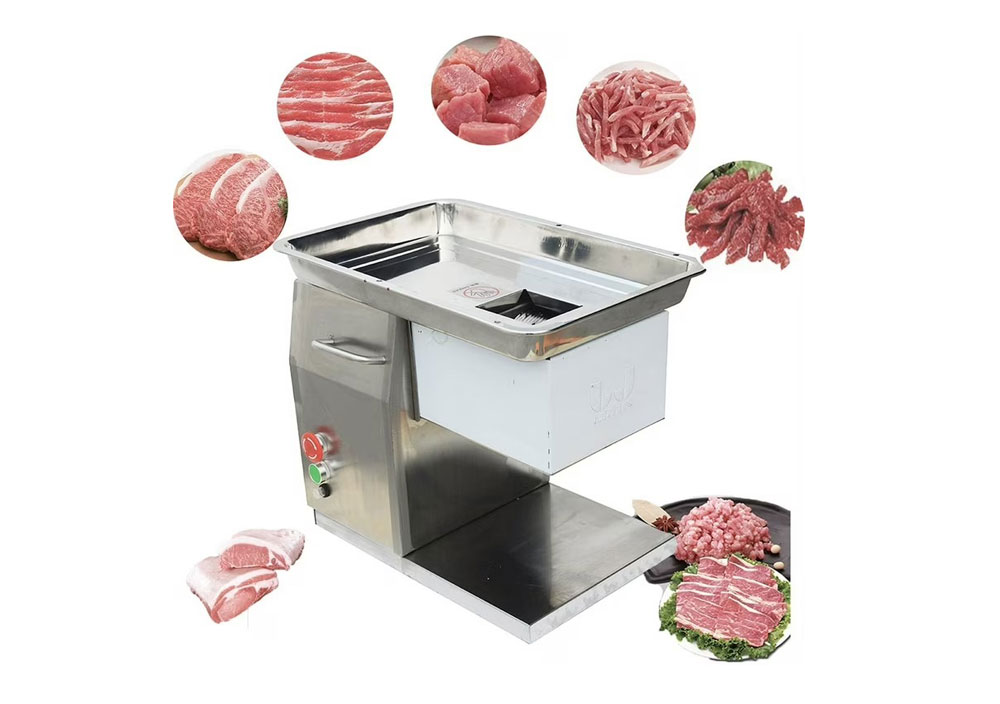
Introduction: What Is a Meat Cutter Machine and Why Is It Essential?
A meat cutter machine is a specialized piece of equipment designed to slice, dice, or grind meat with precision and efficiency. It’s a vital tool in both small butcher shops and large-scale food processing operations, where the need for consistent, uniform cuts is crucial for quality control. Whether you're working with beef, pork, poultry, or fish, these machines offer a level of speed and accuracy that manual cutting methods simply cannot match. With the increasing demand for processed meats in both retail and foodservice sectors, investing in a meat cutter machine is no longer a luxury—it's a necessity for any business aiming to streamline operations and meet consumer expectations.
The Role of Meat Cutter Machines in the Food Industry
In the modern food industry, meat cutter machines play an indispensable role in ensuring efficient and consistent meat processing. They are used across various sectors, including butchery, food manufacturing, and even large-scale catering. Their primary function is to ensure uniform cuts of meat, which enhances both the aesthetic appeal and cooking quality of the product. These machines help meet the growing demand for high-quality, consistent portions, reduce human labor, and minimize waste, thereby improving overall production efficiency.
Types of Meat Cutter Machines: A Closer Look at Each Category
Manual Meat Cutter Machines: Pros, Cons, and When to Use Them
Manual meat cutters, while labor-intensive, are often favored for their simplicity and cost-effectiveness in small-scale operations. They are ideal for smaller butcher shops or home kitchens where the volume of meat being processed is manageable. However, they require more physical effort and are less efficient than their electric counterparts.
Electric Meat Cutter Machines: Efficiency and Precision in Cutting
Electric meat cutters are a step up from manual machines, providing increased precision and speed. With powerful motors, they can handle a higher volume of meat while ensuring consistent cuts. These machines are perfect for medium-sized businesses that need to balance efficiency with affordability.
Commercial Meat Cutter Machines: Heavy-Duty Performance for Large-Scale Operations
Designed for businesses with high processing needs, commercial meat cutters are built for heavy-duty work. They can slice through large volumes of meat quickly and consistently, making them ideal for large butcher shops, restaurants, and meat distribution centers.
Industrial Meat Cutter Machines: Meeting the Demands of High-Volume Processing
Industrial-grade meat cutters are designed for massive production lines, where speed and durability are paramount. These machines are equipped with robust motors and advanced features, allowing them to process enormous quantities of meat in short timeframes. They are typically found in meatpacking plants or large food processing facilities.
Key Features to Look for in a Meat Cutter Machine
Blade Quality and Materials: How They Affect Performance and Durability
High-quality blades are essential for delivering consistent and clean cuts. Blades made from stainless steel or other durable materials are resistant to rust and corrosion, ensuring that the machine performs well over time and with minimal maintenance.
Cutting Capacity: Finding the Right Size for Your Needs
Understanding the cutting capacity of the machine is crucial. If you are running a high-volume operation, you'll need a machine with the capacity to handle large cuts of meat, while smaller operations may require a machine that offers versatility for various portion sizes.
Speed Settings and Controls: Tailoring Cutting to Different Meat Types
Different meat types require different cutting speeds. Machines with adjustable speed settings offer greater flexibility, allowing you to tailor the cutting process based on whether you’re slicing tender cuts of meat or tougher, more fibrous cuts.
Safety Features: Keeping Your Operators Safe
Safety should always be a priority. Look for meat cutters with safety features like blade guards, emergency stop buttons, and lock-out mechanisms to prevent accidental injuries.
Ease of Cleaning: Why It’s Crucial for Longevity and Hygiene
A machine that’s difficult to clean can accumulate bacteria, compromising the safety of your product. Look for models that are easy to disassemble and clean, with smooth surfaces that resist meat and fat buildup.
How to Choose the Right Meat Cutter Machine for Your Business
Understanding Your Cutting Needs: Slicing, Dicing, or Grinding?
Meat cutter machines come with different functionalities. If you need to slice meats into uniform pieces, a slicer is your best bet. For dicing, a dicing machine would be ideal. For grinding, a specialized grinder might be needed. Assessing your processing requirements will help you make the best choice.
Consider Your Budget: Balancing Cost with Quality
While it's tempting to go for the cheapest option, it's essential to balance price with quality. The right machine should not only fit your budget but also deliver reliability and performance for years to come.
Brand Reputation and Reliability: What to Look For
Choose a reputable brand known for producing durable and high-quality meat cutters. A trusted brand often provides better customer service, warranties, and reliability, ensuring you get the most out of your investment.
Space and Size Considerations: Making Sure It Fits Your Operation
Size is another critical consideration. Ensure the machine will fit into your workspace without overcrowding or obstructing other essential equipment. Always measure your available space before purchasing.
Meat Cutter Machine vs. Meat Slicer: What’s the Difference?
While both meat cutters and meat slicers are used for processing meat, the key difference lies in their functionality. Meat cutters typically offer more versatility, handling slicing, dicing, and grinding tasks, while meat slicers are specialized for slicing meat into thin, uniform sheets. Understanding the purpose of each machine will help you choose the one that best suits your needs.
Step-by-Step Guide to Using a Meat Cutter Machine
Preparing the Machine for Use: Setup and Pre-Operational Checks
Before using the machine, make sure it is correctly assembled, and all parts are securely in place. Inspect the blades for damage or wear, and check that the machine is properly lubricated if required.
Loading Meat Properly: How to Ensure Even and Safe Cuts
Always load the meat into the machine evenly, without forcing it, to ensure uniform cuts. Improper loading can cause the machine to malfunction or produce uneven cuts.
Operating the Machine: Basic Techniques for Maximum Efficiency
Adjust the speed and settings based on the type of meat being processed. Start the machine, feed the meat slowly, and ensure that the cuts are consistent and clean.
Troubleshooting Common Issues During Operation
If the machine starts malfunctioning, stop immediately and check for any obvious issues, such as a jam or improper blade alignment. Address the issue before resuming operation.
Maintenance Tips to Keep Your Meat Cutter Machine Running Smoothly
Regular Cleaning: Best Practices for Hygiene and Performance
Clean the machine after each use, removing any meat residues and fat buildup. Use hot water and a safe, non-abrasive cleaner to prevent bacteria buildup and ensure the machine stays in peak condition.
Blade Sharpening: How and When to Maintain Your Blades
Regularly sharpen the blades to maintain their cutting performance. Dull blades can lead to uneven cuts, unnecessary wear on the motor, and even safety risks.
Motor and Gear Maintenance: Keeping the Machine in Peak Condition
Regularly inspect the motor and gears for any signs of wear. Lubricating moving parts and checking the alignment will help prevent breakdowns and extend the machine’s life.
Storing Your Meat Cutter Machine: Ensuring Longevity During Off-Hours
When not in use, store the meat cutter machine in a dry, cool place. Avoid placing it in areas with excessive humidity, which could cause rusting or degradation of the components.
Common Problems with Meat Cutter Machines and How to Fix Them
Machine Not Starting: Troubleshooting Power Issues
If the machine doesn’t start, check for electrical issues like loose connections or a blown fuse. Always ensure that the machine is properly plugged in and that the power supply is stable.
Uneven Cuts: Fixing Blade Alignment and Tension Problems
If cuts are uneven, check if the blade is correctly aligned and adequately tensioned. Improper blade positioning can cause inconsistent results.
Overheating: Preventative Measures and Quick Fixes
Overheating can occur if the machine is overused or the motor is not adequately ventilated. Allow the machine to cool down, and make sure the ventilation system is clear of any obstructions.
Clogged or Jammed Blades: How to Clear Blockages Safely
If the blades become clogged, turn off the machine and remove any blockages gently. Always use proper tools to avoid injuring yourself.
Safety Guidelines for Operating a Meat Cutter Machine
Proper Use of Protective Equipment: Gloves, Guards, and Aprons
Operators should wear protective gloves, aprons, and guards to minimize the risk of injury when handling the machine. Protective equipment is essential for safety in busy work environments.
Safe Loading and Unloading Techniques
Always load meat evenly and avoid placing hands near moving parts. Similarly, when unloading, ensure the meat has been fully processed before removing it from the machine.
Locking and Unblocking the Machine: Preventing Accidental Injuries
Always lock the machine when not in use to prevent accidental activation. If the machine becomes blocked, ensure that it is safely turned off before attempting to clear the blockage.
Worker Training: Ensuring All Operators Are Properly Educated
All operators should undergo proper training on the safe use of the meat cutter machine. This training should cover machine setup, operation, cleaning, and troubleshooting to ensure both safety and efficiency.
How to Improve Efficiency with a Meat Cutter Machine
Speed Adjustments for Different Meat Types
Adjust the speed of the machine to suit the type of meat being processed. Softer meats require slower cutting speeds, while tougher cuts may require higher speeds.
Scheduling Regular Maintenance to Minimize Downtime
Implement a regular maintenance schedule to address issues before they cause downtime, ensuring your operations run smoothly and without interruption.
Training Employees to Maximize Operational Efficiency
Training employees on best practices for using the machine can significantly boost efficiency. Proper handling and care lead to less waste and improved throughput.
Cost Considerations When Purchasing a Meat Cutter Machine
Initial Investment: What You Should Expect to Pay
The initial investment in a meat cutter machine can vary based on the type, size, and features. Expect to pay more for commercial or industrial-grade models, but the added investment often leads to long-term savings.
Long-Term Costs: Maintenance, Energy Use, and Replacement Parts
Consider ongoing costs such as maintenance, energy consumption, and potential replacement parts when budgeting for your machine.
Calculating ROI: How to Determine If the Investment Is Worth It
Evaluate the potential return on investment (ROI) by considering factors such as increased productivity, reduced labor costs, and improved meat quality. A well-maintained meat cutter machine can pay for itself over time.
The Environmental Impact of Meat Cutter Machines
Energy Consumption and Sustainability Practices
Modern meat cutter machines are designed with energy efficiency in mind. Opt for machines with energy-saving features to reduce operational costs and minimize environmental impact.
Waste Management: How to Minimize Meat Waste During Processing
Proper meat handling and machine adjustments can reduce waste during processing. For operations focused on sustainability, consider machines that optimize the use of every cut.
Eco-Friendly Models: Are They Worth Considering?
Eco-friendly meat cutter machines, which minimize waste and energy use, are gaining popularity. Although they may come with a higher upfront cost, they offer long-term savings and contribute to sustainability goals.
Top Brands in the Meat Cutter Machine Industry
Overview of Leading Manufacturers and Their Best Models
There are several reputable brands in the meat cutter machine industry, each offering unique features and models. Leading brands often provide robust customer support, ensuring that you receive top-notch service.
What Makes These Brands Stand Out in the Market
Top brands distinguish themselves through innovation, reliability, and customer service. Their machines typically offer superior durability, cutting precision, and efficiency, making them the preferred choice for businesses.
Customer Reviews and Testimonials: How They Can Guide Your Decision
Customer feedback can provide valuable insights into the performance, durability, and ease of use of different meat cutter machines. Consider reading reviews to guide your purchasing decision.
Understanding the Technological Advancements in Meat Cutter Machines
Smart Features and Automation: How Technology Is Shaping the Industry
Advancements in technology have revolutionized meat cutter machines, with features like automated cutting and smart sensors that adjust to meat consistency. These improvements enhance precision and efficiency.
The Role of AI in Meat Cutter Machines: A Peek into the Future
Artificial intelligence is slowly making its way into the meat processing industry. AI can optimize cutting patterns, monitor machine performance, and even predict maintenance needs, making it an exciting development for future machines.
Integrating Meat Cutter Machines with Other Processing Equipment
Integration with other food processing equipment, such as grinders, slicers, and packaging machines, allows for a seamless and highly efficient production line, increasing overall productivity.
Meat Cutter Machines in the Home Kitchen: Is It Worth It?
Exploring the Feasibility of Home Meat Cutting
While industrial meat cutter machines may seem out of place in a home kitchen, smaller, more affordable models are available for those who regularly process large quantities of meat at home.
Benefits for Home Cooks and Butchers
For avid home cooks or professional butchers, a meat cutter machine can ensure consistent, customized cuts of meat, improving the quality and variety of meals you prepare.
Choosing the Right Meat Cutter Machine for Personal Use
Home meat cutters should be chosen based on the amount of meat you typically process. Look for models that are compact, easy to clean, and capable of handling a variety of meats.
What to Expect During the Installation of a Meat Cutter Machine
Site Preparation: Ensuring the Area Is Ready for the Machine
Before installing your meat cutter machine, make sure the site is clean, dry, and spacious enough to accommodate the machine. Ensure proper power supply and ventilation for optimal operation.
Professional Installation vs. DIY Setup
While professional installation can ensure the machine is set up correctly, many models are designed for DIY installation. Always follow manufacturer guidelines to ensure safe and proper setup.
Testing and Calibration: Getting Your Machine Ready for Operation
Once the machine is installed, perform a test run to ensure it’s working correctly. Calibrate the machine for accuracy and efficiency before putting it to regular use.
Meat Cutter Machine Regulations and Certifications: What You Need to Know
Industry Standards for Safety and Quality
Meat cutter machines must adhere to strict safety and quality standards, including certifications from recognized regulatory bodies. These standards ensure the machine is safe for operation and meets food safety requirements.
Understanding the Role of Food Safety Certifications
Look for machines with certifications such as NSF or CE marks, which signify that the equipment meets international safety and sanitation standards.
Compliance with Local and International Regulations
Depending on your location, your meat cutter machine may need to comply with specific local or international regulations. Always consult the manufacturer’s guidelines and local authorities to ensure compliance.
How to Maximize the Lifespan of Your Meat Cutter Machine
Best Practices for Regular Care and Handling
Proper care and handling are key to extending the lifespan of your machine. Follow the manufacturer’s maintenance schedule and ensure regular checks for wear and tear.
Prolonging Blade Sharpness and Durability
Keep blades sharp and replace them when necessary to maintain cutting efficiency. Dull blades can lead to overheating and motor strain, reducing the overall lifespan of the machine.
Avoiding Common Mistakes That Shorten the Machine’s Life
Avoid overloading the machine or using it beyond its capacity. Proper usage and regular maintenance can significantly extend the operational life of your meat cutter machine.
Conclusion: Making the Right Choice for Your Meat Cutting Needs
Choosing the right meat cutter machine depends on your specific needs, budget, and operational requirements. By understanding the various types of machines, their key features, and the maintenance necessary for optimal performance, you can ensure your investment serves your business for many years to come. With the right machine, you can improve efficiency, safety, and the quality of your meat products—helping your business stay competitive in the ever-evolving food industry.
FAQs: All You Need to Know About Meat Cutter Machines
1. What is a meat cutter machine used for?
A meat cutter machine is used for slicing, dicing, or grinding meat with precision and efficiency. It's commonly used in butcher shops, food processing plants, and even home kitchens to ensure uniform cuts of meat for better presentation, cooking consistency, and product quality.
2. What are the different types of meat cutter machines?
There are several types of meat cutter machines, including:
- Manual Meat Cutter Machines: Operated manually, ideal for small-scale operations.
- Electric Meat Cutter Machines: Powered by electricity, offering increased speed and efficiency.
- Commercial Meat Cutter Machines: Heavy-duty machines for medium-sized businesses.
- Industrial Meat Cutter Machines: High-performance machines designed for large-scale production facilities.
3. How do I choose the right meat cutter machine for my business?
When choosing a meat cutter machine, consider factors such as:
- Volume: Determine how much meat you need to process regularly.
- Machine Type: Choose based on your needs—manual, electric, or commercial grade.
- Blade Quality: Look for high-quality, durable blades for consistent cuts.
- Size and Space: Ensure the machine fits in your workspace.
- Budget: Balance cost with quality for the best return on investment.
4. How do I maintain a meat cutter machine?
To ensure your meat cutter machine runs smoothly:
- Clean it regularly: After each use, disassemble and clean all parts to prevent buildup of meat residue and bacteria.
- Sharpen the blades: Regularly sharpen the blades to maintain cutting efficiency and prevent damage.
- Lubricate moving parts: Lubricate gears and other moving parts to reduce wear and tear.
- Check for wear and tear: Inspect for any signs of damage or malfunction and address them promptly.
5. What are the safety precautions for using a meat cutter machine?
Safety is critical when using a meat cutter machine. Some important safety measures include:
- Always wear protective gear such as gloves and aprons.
- Ensure the machine is properly assembled and all parts are secured before use.
- Never place hands near moving parts during operation.
- Keep the machine off when not in use to avoid accidental activation.
- Follow all manufacturer guidelines and receive proper training for operators.
6. How long do meat cutter machines last?
The lifespan of a meat cutter machine depends on factors like brand, usage, and maintenance. With proper care, a high-quality machine can last anywhere from 5 to 10 years or longer. Regular maintenance, such as cleaning, blade sharpening, and part replacement, will help extend the machine's longevity.
7. Can I use a meat cutter machine at home?
Yes, there are smaller, more affordable meat cutter machines designed for home use. These machines are perfect for individuals who frequently process meat at home, allowing for custom cuts of meat with greater efficiency than using a knife. However, they are typically designed for smaller quantities of meat and may not have the durability or features of commercial-grade models.
8. What are the common problems with meat cutter machines?
Some common issues with meat cutter machines include:
- Uneven Cuts: This can happen if the blade is misaligned or dull.
- Machine Not Starting: This can be caused by electrical issues or a blown fuse.
- Overheating: This often occurs when the machine is overworked or not adequately ventilated.
- Clogged Blades: This happens when meat or fat builds up on the blades, affecting performance.
9. How can I increase the efficiency of my meat cutter machine?
To maximize efficiency, consider the following tips:
- Regular maintenance: Prevent breakdowns by scheduling regular maintenance checks.
- Adjust speed settings: Tailor the machine’s speed to the type of meat being processed for optimal cuts.
- Training employees: Ensure operators are trained to use the machine efficiently, minimizing waste and maximizing throughput.
10. What are the cost considerations when purchasing a meat cutter machine?
The cost of a meat cutter machine depends on several factors, including:
- Initial investment: Commercial and industrial machines tend to be more expensive than smaller, manual models.
- Long-term costs: Consider maintenance, repair costs, and energy consumption over the machine's lifetime.
- Return on Investment (ROI): Evaluate how the machine will improve efficiency, reduce labor costs, and enhance product quality to determine its value.
11. Can meat cutter machines be integrated with other food processing equipment?
Yes, many meat cutter machines can be integrated with other food processing equipment, such as grinders, slicers, and packaging machines. This integration helps streamline the entire production process, increasing overall efficiency and ensuring consistent product quality throughout the manufacturing cycle.
12. Are there eco-friendly meat cutter machines?
Yes, some manufacturers produce energy-efficient, eco-friendly meat cutter machines designed to minimize energy consumption and reduce environmental impact. These machines are often equipped with features like low-energy motors and are made from recyclable materials, making them a great choice for businesses focused on sustainability.
Must-Read Blogs For Chain Restaurants Owner








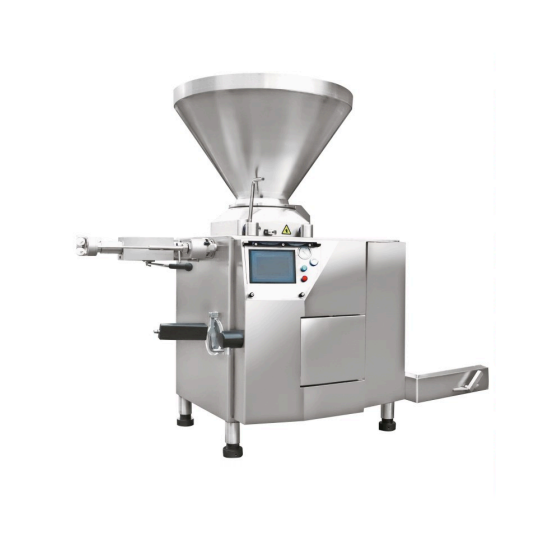
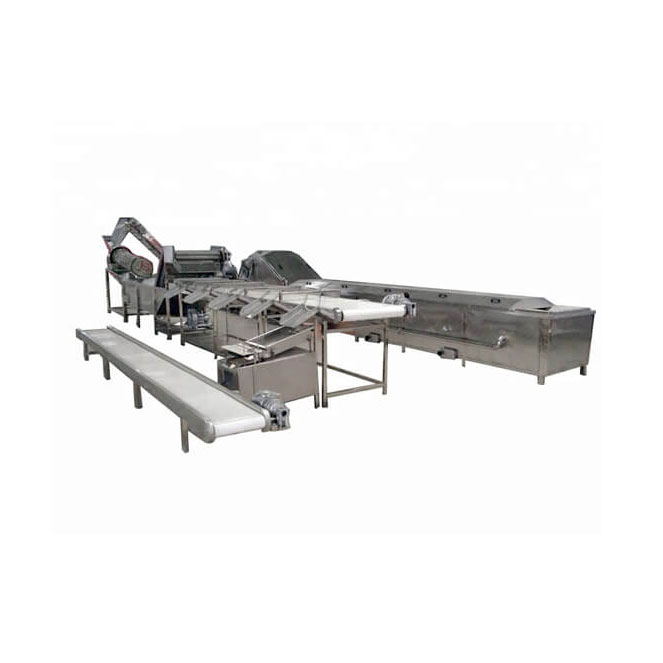
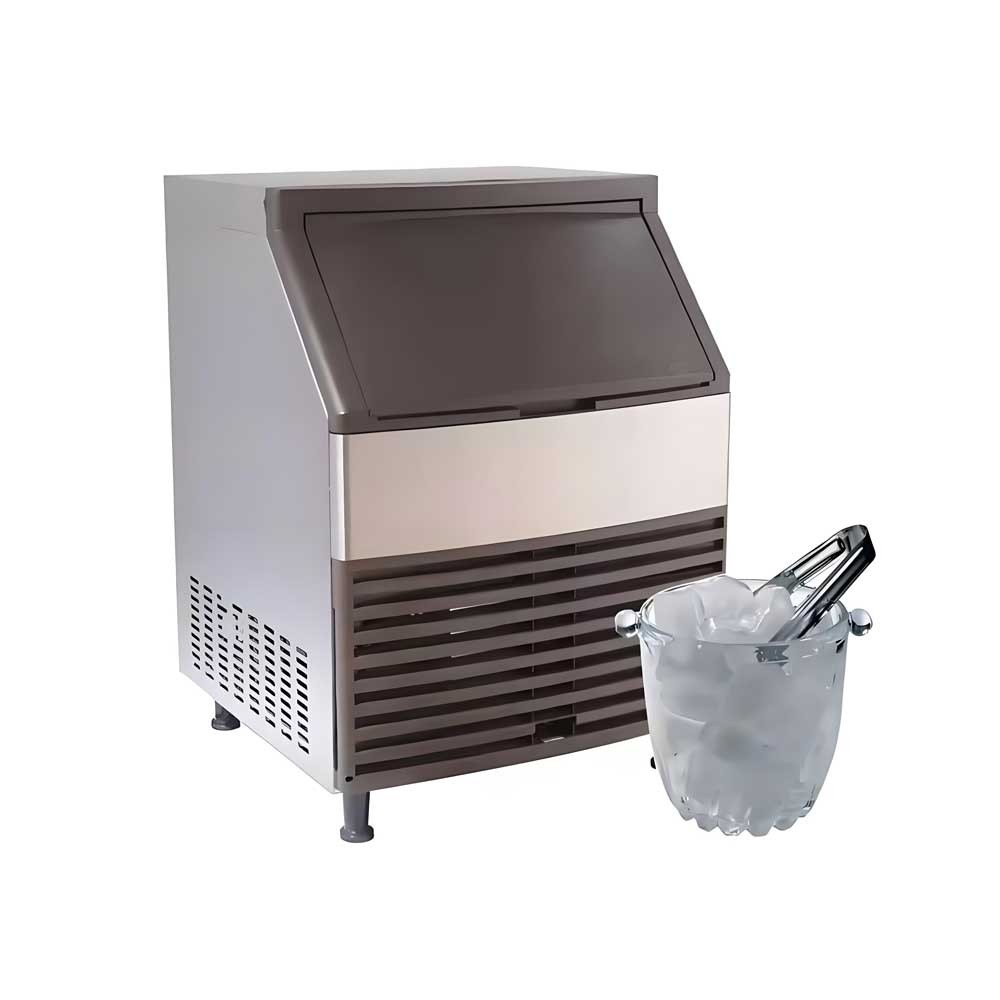
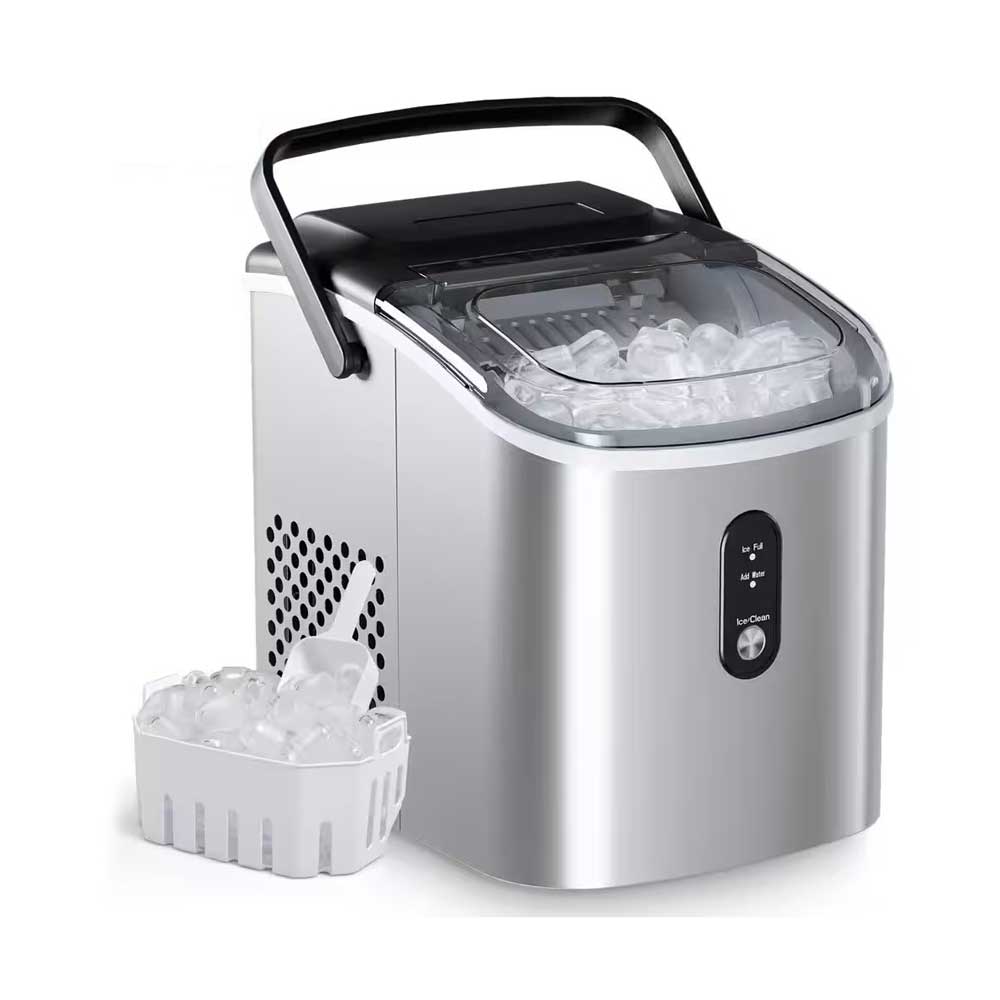 Portable Flake Ice Machine
Portable Flake Ice Machine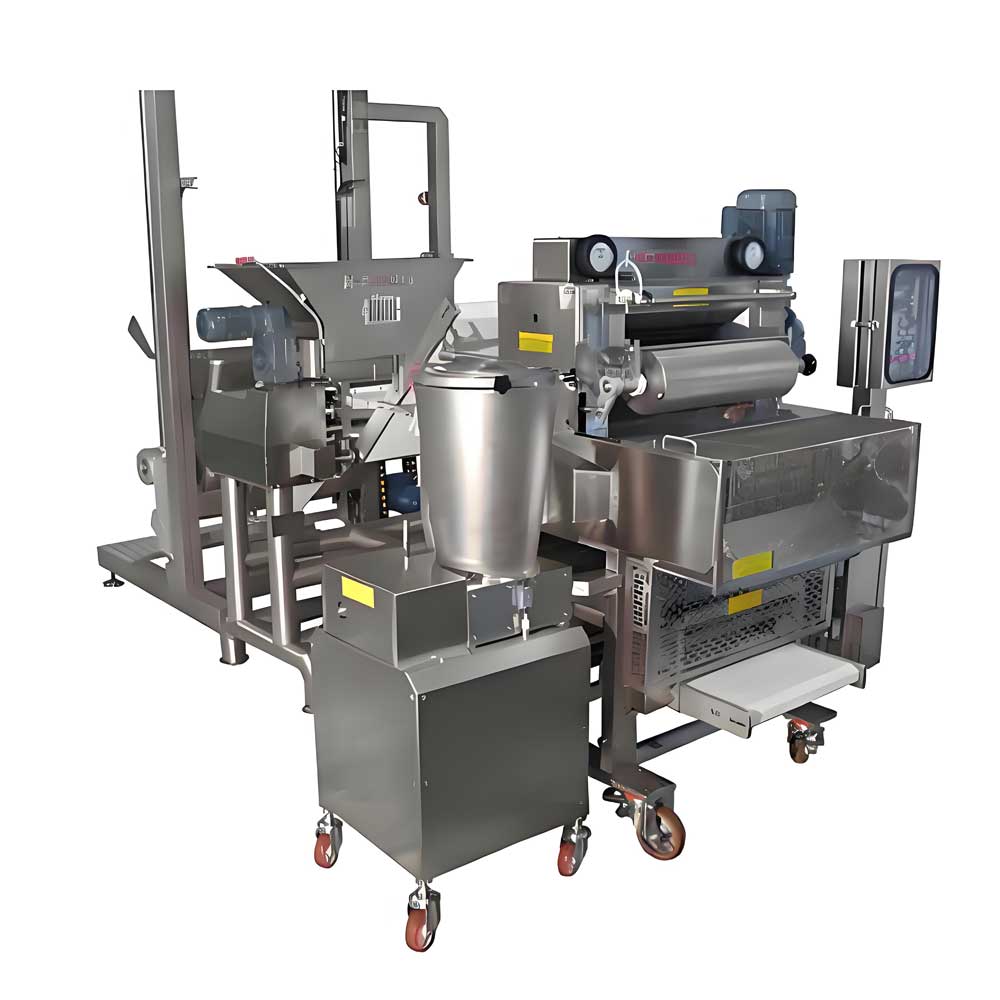 Pelmeni Making Machine
Pelmeni Making Machine
Ready to Get Started?